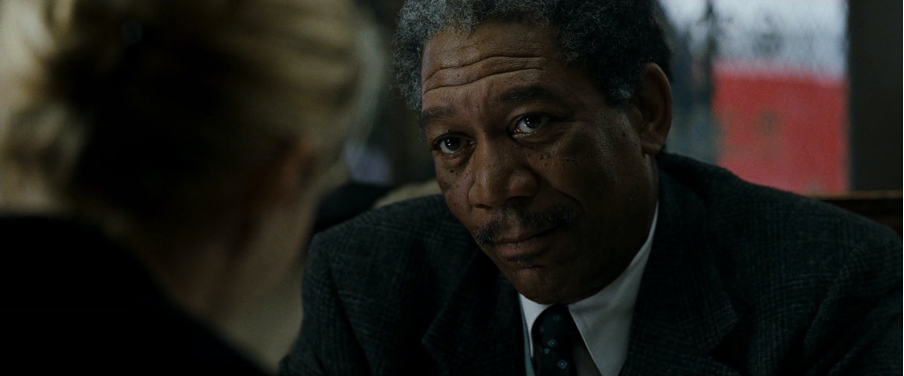Se7en Structure Breakdown
This year for Spooky Season, the guys at 241 Studios and I did a deep dive into David Fincher’s 1995 masterpiece Se7en, one of the greatest thriller/horror films of all time. We discussed everything from the fantastic look and production design of the show, to it’s narrative structure, to whether the ending actually has a seed of optimism despite being one of the darkest movies of the past 30+ years. So checkout the podcast, and my repost of the breakdown and observations below, and let me know what you think in the comments!
As always, these breakdowns contain SPOILERS, and are only recommended if you've already seen the movie. You can check my introduction to these breakdowns, to get an overview of my process and philosophy.
The Basics
Director: David Fincher
Writers: Andrew Kevin Walker
Release Date: 1995
Runtime: 127 minutes
IMDB: https://www.imdb.com/title/tt0114369
Download The Script
Movie Level Goals
Protagonist: William Somerset
Antagonist: John Doe
External Goal: Stop John Doe's Plan
SUCCESS | FAILURE
Internal Goal: Overcome his apathy/find the will to keep fighting
SUCCESS | FAILURE
Four Observations
Observation #1: The Seven Days of Se7en
ACT 1
Sunday: 0:00-6:17 Crime of Passion
Monday: 6:18-17:06 Gluttony, 1st Crime
Tuesday: 17:07-29:27 Greed, 2nd Crime
ACT 2
Wednesday: 29:29-47:42 No Crime
Thursday: 47:43-57:27 Sloth, 3rd Crime
ACT 3
Friday: 57:28-1:24:06 No Crime
Saturday: 1:24:07-1:33:04 Lust, 4th Crime
ACT 4
Sunday: 1:33:05- Pride, 5th Crime
1:35:35-2:01:53 Envy, 6th Crime and Wrath, 7th Crime (committed by Mills)
Observation #2: The Climax that Starts Act 4
Often times the section titles in movies don’t correspond with the deeper goal structure of the movie. In Se7en, however, the section titles do mostly match up with one minor exception. Sunday through Tuesday constitute Act 1, Wednesday and Thursday make up Act 2, and Friday and Saturday fill-up Act 3. But the most climactic moment until this point has to be when John Doe turns himself in. This feels like it must be the Act 3 Climax. Interestingly, though, it doesn’t happen at the end of Saturday, but instead occurs on Sunday, after Somerset and Mills have discovered the 5th victim (Crime). Indeed, one could chose to make that moment the end of Act 3, with the beginning of Act 4 happening as the detectives discuss the case with the captain. Given, though, how well the day structure fits the act structure, I chose to keep the end of Act 3 and start of Act 4 in line with the day structure.
Observation #3: Day Structure and Soft Climaxes
The day structure serves an interesting function. Generally, titled structures (days, seasons, etc.) serve to help guide the audience when act goals and climaxes don’t do this as clearly as perhaps the filmmakers think they could. A look at the goals, climaxes, and ends of the first three acts definitely fit this idea. The climax of Act 1 (Somerset explaining they have a serial killer on their hands) is followed by a roughly five montage of Somerset and Mills working on their own before Wednesday starts. Likewise, Act 2 doesn’t immediately launch a clear cut goal, but instead has Tracy calling and inviting Somerset to dinner, which eventually sparks their joint efforts in Act 2. Likewise, the climax of Act 2 (the discovery of the 3rd victim) is followed by another call from Tracy to Somerset, and Act 3 starts with their breakfast meeting before shifting to Somerset and Mills trying to create their own leads. Of course, these non-climactic scenes serve other purposes (character development, internal goals, motivation, stakes), but their placement is interesting and it seems the Day titles help provide additional structure to the movie.
Observation #4: Somerset as protagonist
I generally have a hierarchical set of rules for determining who the protagonist is in a movie:
Who's goal provides the structure?
Which character has an internal goal?
Who are we most aligned with?
In Se7en, Somerset and Mills have joint movie and act level external goals, meaning Rule #1 doesn’t really help us out here.
It does seem that Somerset has the more realized internal goal. He has given up on the city and on having a reason to keep fighting. But Mills (at the end of Act 3) and Tracy (at the start of Act 3) both provide those reasons, and by the end of the movie, Somerset’s voice-over quoting Hemingway suggests he has changed his mind about retirement. Mills, on the other hand, doesn’t have a very well developed internal goal. He believes in fighting until the end, though we can assume John Doe’s victory has robbed him of that belief. But the movie doesn’t explore that, barely showing us Mills in the conclusion, and instead chooses to focus on the slightly (though barely) uplifting decision by Somerset (in this way Se7en arguably avoids the even darker bleakness at the end of Chinatown).
Even if you believe Mill’s disillusionment counts as an internal change equal to Somerset’s, it’s clear that the movie overall is more aligned with Somerset. The movie begins and ends with him. Additionally, the movie shows us Somerset by himself more often than it shows Mills, and more importantly has multiple scenes between Somerset and Tracy that Mills is not aware of, but no scenes of note between Mills and Tracy without Somerset.








